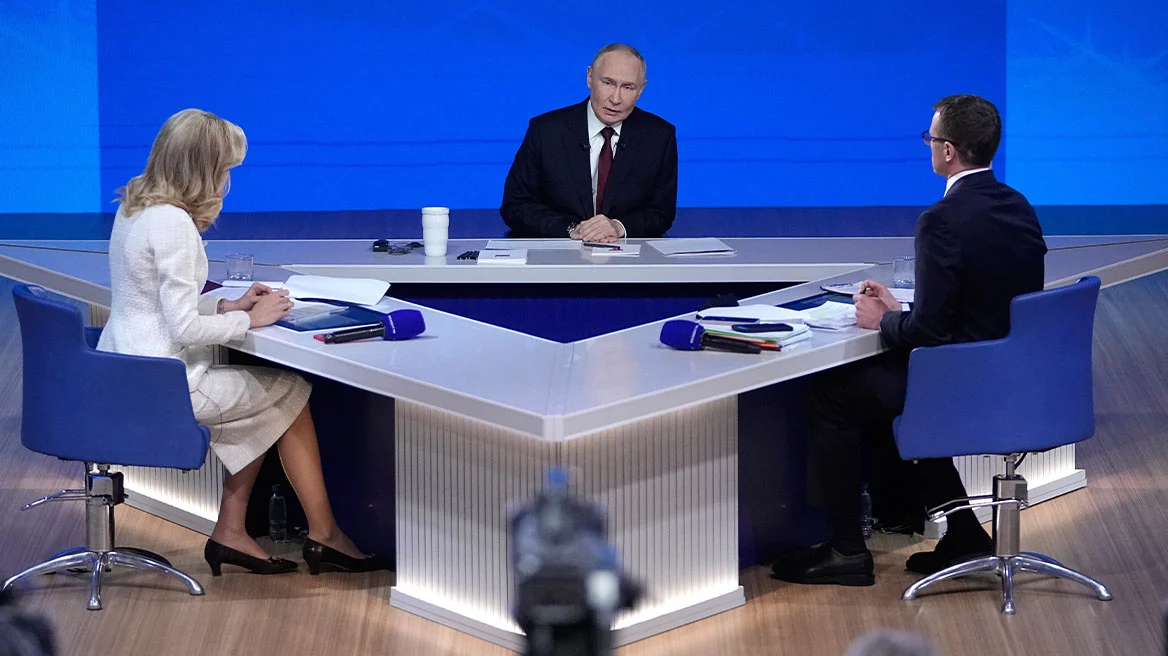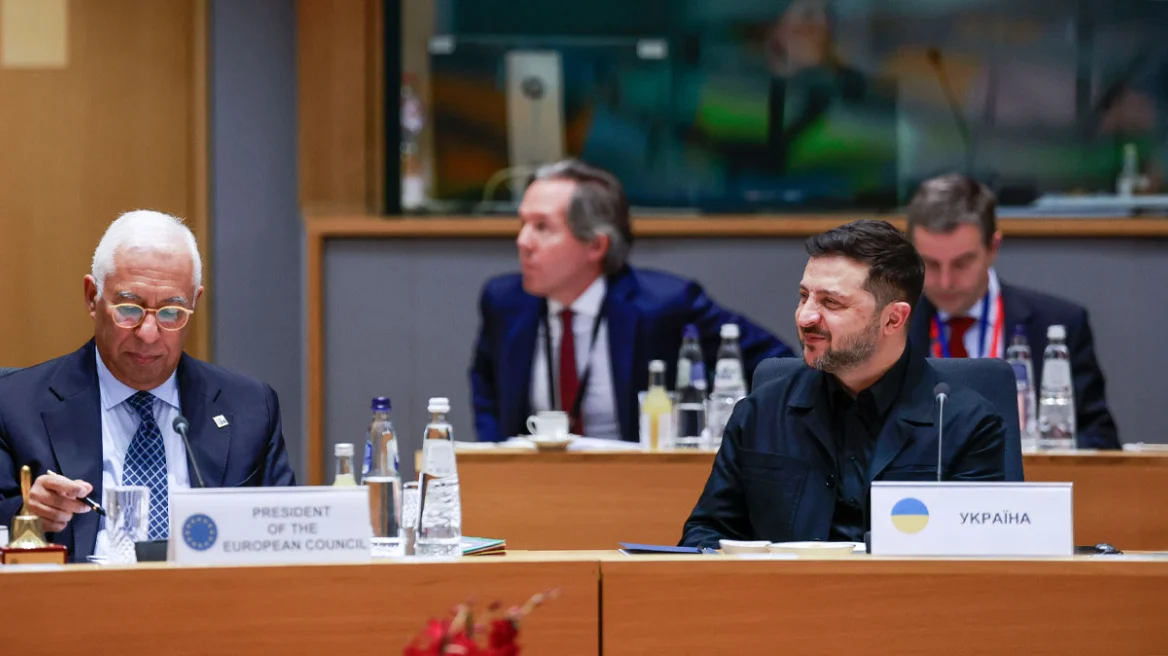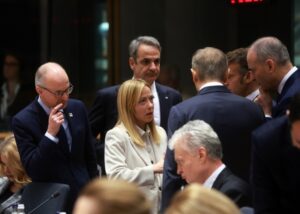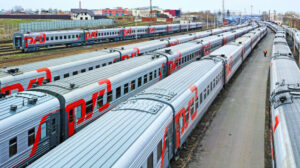It was early in the morning of October 29, 1941, with Greece still under occupation, when a group of 50-60 disabled war veterans, with their arms and legs cut off, some in wheelchairs and others on crutches, appeared in front of the Monument to the Unknown Soldier.
The Carabinieri guarding the monument tried to block them at first. However, the gesture with which the leading disabled veterans “ordered” them to step aside was so imperious and contemptuous that they retreated and let them pass. Then, these wounded heroes formed a semicircle around the monument and three of them stepped forward to lay a simple laurel wreath.
One of the three who was barely able to walk on his stilts stood at attention and said: “Dead heroes, our brothers, we have much to tell you, but you understand that under the current circumstances what we want to tell you we cannot say out loud. But you do not need voices and words to understand us. So listen to what we have to tell you” and was silent for two minutes. A deathly silence prevailed during that shocking scene. Then he concluded simply: “Now we have told you everything we wanted you to know. We are sure that you felt us”…

This, perhaps the most moving honor paid in front of the monument, was recorded by journalists Achilleas and Kyros Kyrou in their “Chronicle” for the period of the Occupation, with them commenting that “never before have more beautiful words been spoken before the national monument than those that were not heard by mortal ears on that morning of October 29, 1941”.
And this is certainly one of the many special moments that Greeks and foreigners, leaders and ordinary citizens, have experienced, passing by this emblematic point, for 93 years…
A space that has evolved, through the increasing juxtaposition of blood-stained heroic landmarks, into one of the most sacred monuments of the homeland to honor with reverence its unknown fallen. A space that, despite its obvious historical importance, is occasionally given over to the appetites of “known and unknown”, hooded protesters or all sorts of protesters and becomes a theater of incidents, with images that reach every corner of the planet through television cameras, brutally defaming the country itself.

Just a few days ago, on March 25, when the festivities were over, a woman, instead of leaving flowers, decided to write insulting slogans on the Monument to the Unknown Soldier, resulting in her being arrested and taken to the Autophoros, where she was charged with damage to public property.
This, however, was the most “innocent” of the many scenes of vandalism that have occurred in recent years in front of the monument with which the nation honors those who sacrificed themselves for the freedom, independence and dignity of Greece. Events that, in addition to abysmal ignorance, betray absolute ignorance of the importance of the historical memory of a people.
If one considers the aphoristic, but so true approach of the great psychotherapist Irvin Yalom that “I will be truly dead when I no longer exist in anyone’s memory”, one realizes that, in defiance of oblivion and its constant battle with collective memory, this very monument stands, which has unfortunately undergone many adventures.
The old palaces
These adventures, perhaps the most unknown to the general public, began before it was even built and intensified after its unveiling, which took place on March 25, 1932.
Initially, the first such monument, dedicated to the unknown fallen of the 1821 Struggle, was built in 1889 in Ermoupolis, Syros. However, after World War I and the heavy toll that Greece also paid, it was decided, following the example of other European countries, to erect a national Monument to the Unknown Soldier in Athens. The first disagreements arose about where it should be built. Finally, in early 1926, the then Minister of Military Affairs Theodoros Pangalos, grandfather of the namesake and deceased former minister of the PASOK governments, having already proceeded with his short-lived coup, decided to build it in front of the Old Palace Square.
On March 3, 1926, the competition for the submission of the relevant study was announced and in October of the same year, the one by the architect Emmanuel Lazaridis, who had submitted it under the pseudonym Skra, was selected by a majority. Almost two years later, in June 1928, the legislative decree for the implementation of the monument and the earthworks necessary for the formation of the site was published.
The choice of this specific point, however, continued to provoke reactions from architects and other influential figures. The issue had to come to Parliament and in July 1929 the then Prime Minister Eleftherios Venizelos put an end to the dispute by definitively deciding that the most suitable location was in front of the Old Palace.
The second… derby was held over the sculptor who would create the central representation of the monument. Emmanuel Lazaridis, who supervised the entire project, initially collaborated with the sculptor Thomas Thomopoulos, who had proposed a giant battle as the central theme. However, Lazaridis subsequently bypassed Thomopoulos, choosing Fokion Rok, who had just arrived from Paris (having studied at the School of Fine Arts there as well as at the Giulio Academy). The Lazaridis-Thomopoulos feud, which caused strong reactions in the artistic circles of the time, lasted until December 1930, when the monument’s supervisory committee approved the new proposal and subsequently the replacement.
The work, inspired by archaic statues, but also with the austerity that characterizes it, was classical and modern at the same time, however, this was recognized over the years. Its unveiling took place on March 25, 1932, in a festive atmosphere and with the presence of representatives of many foreign countries, such as the USA, France, Italy, Yugoslavia, Egypt, Romania, Poland, and Turkey, who laid wreaths and paid tribute.
At the same time, in front of a large crowd that had gathered, a large parade took place and then a military torchlight procession. On that same day, the light that has been burning “unsleeping” in front of the monument since then was transferred from the Holy Lavra.
Immediately after the completion of the construction, the honorary guard was taken over by a company of the Guard of the President of the Republic, which was renamed the Guard of the Monument to the Unknown Soldier, a name it retained until the 1935 Revolution. Then, with the return of King George II, the Evzone Company was renamed the Royal Guard and remained so until the end of the junta in 1974. In the 1950s, however, the honorary guard of the monument, apart from the Evzones, was taken over in rotation by all three branches of the Armed Forces, the Army, the Navy and the Air Force.
Since the post-colonial period, the guarding has been assigned to the Presidential Guard with the Evzones, who with their unique discipline and symbolic ritual have attracted the interest of Greeks and foreigners alike.
The reactions
Can the Monument to the Unknown Soldier, having conquered its place in History with its timeless imposingness, today undoubtedly constitute the supreme point of national memory, thus justifying its inspirers and creators for the aesthetic result that, without anything blatant or unnecessary, has now become a constituent element of the capital. Who could imagine Syntagma Square without it?
However, it was not like this at the beginning, at least for a portion of the world, but also for the press of the time, which reacted very strongly, with the Association of Greek Sculptors characterizing the work as a “vile work at the expense of Greek art” and some newspapers of the time speaking with vulgar headlines about a “monstrosity” and “obscene work”. From one point of view, just as its absence is unthinkable now, its acceptance was extremely difficult at the time, especially as it radically changed the shape of the square with the dense thicket that existed in front of the Old Palace.
Another reason that triggered the reactions was its considered excessive cost, which reached 6.5 million drachmas in a difficult period for the country. This was because, on the one hand, the earthworks for the complete renovation of the square to a lower height by 7 meters, compared to the current Parliament building, were time-consuming, with the means of that period, and the assistance of special craftsmen from France was required, which increased the cost.
On the other hand, there was the background to the change of the sculptures, the rumors of secret agreements and high fees, but also the fact that while the casting of the metal shields and incense cups was planned to be done in Greece, it was eventually done in Paris, at a fourfold price as it was said at the time.
Thus, the reactions had begun before the inauguration of the monument, with large-circulation newspapers such as “Athens News” (later “News”) to… drag the dance with headlines like “The Unknown Soldier. How the monster was born.” The newspaper stated in its front-page commentary that “never has the public outcry been so unanimous on a question of taste and never has the artistic world been so unanimous in revolt,” adding that “of course we can no longer recommend the demolition of the rampart that undermined the simple and unadorned architectural ensemble of the old palaces and the new procession of the unknown soldier to find a better grave. But the scraping off of at least the sculpted embalming is imperative.” Some readers, however, went so far as to seriously and personally propose the demolition of the monument. The same newspaper, after the unveiling, urged the political leadership not to… regret the money it gave and to demolish the abomination without hesitation.
Furthermore, the newspaper “Acropolis” on the eve of the inauguration ceremony mockingly commented that protocol reasons imposed its erection because foreign dignitaries visiting Athens had nowhere to lay their wreaths. “So Aleppo the 6,500,000 drachmas that the Greece of the refugees spent on the renovation of the square of the old palaces,” as it stated.
The position of the academic and then director of the National Gallery, Zacharias Papantoniou, was also characteristic, stating: “We lost the calm appearance of the Bavarian building to gain what? Who would have thought! The aesthetic nightmare that the palace building is in the air.”
Despite this, the majority of the world and the newspapers positively viewed the monument that would forever change the image of the center of Athens, “starring” in emblematic moments such as the spontaneous popular gathering of the Liberation from the shackles of the Occupation in October 1944, which left an indelible historical imprint. In the following decades, hundreds of foreign leaders paid tribute to the Unknown Soldier, even in 2021, in the midst of a pandemic, at the events for the 200th anniversary of the Revolution of 1821.
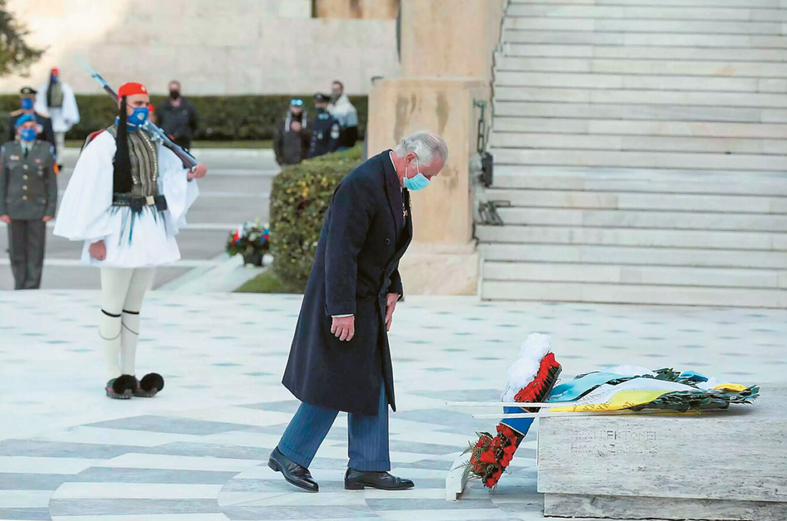
The modern adventures
However, apart from the brilliant pages, as befits such a monument, there have been and are the unpleasant ones, which tarnish not the Unknown Soldier but the image of the country. These include incidents during rallies at various times and even isolated acts by disturbed individuals, such as on October 4, 2021, when a 48-year-old farmer suffering from psychological problems drove his farm truck onto the sidewalk towards the Monument to the Unknown Soldier, shouting that he would blow himself up and warning police to move away. After he was neutralized, a LPG cylinder and a gasoline can were found in the car.
Of course, the monument is at the center of the protest events due to its location. As happened in December 2008 after the murder of 15-year-old Alexandros Grigoropoulos, when massive rallies were organized for three days, on the sidelines of which groups of individuals from the so-called anti-authoritarian space destroyed everything they found in front of them.

The worst period, with successive episodes that sometimes threatened not only the monument, but also the physical integrity of the Evzones, was that of the demonstrations of the Indignant from May to November 2011. It was a “black” period for the country under the weight of the memorandum austerity measures, during which the center of Athens had surrendered to daily mobilizations, but also to the… appetites of the hooded men, destroying all economic activity. In this context, there were dozens of injuries to protesters and police officers, assaults on politicians and extensive destruction even around the Tomb of the Unknown Soldier.

The same scene was repeated several times in the following years. In fact, on May 18, 2017, while then-Prime Minister Alexis Tsipras was speaking in Parliament, approximately 30 hooded men attacked the police forces lined up in front of the monument, attempting to climb the steps to reach the Parliament courtyard. A literal hand-to-hand battle ensued, with riot police throwing chemical weapons and a rain of Molotov cocktails that burned one of the Evzone outposts.
Furthermore, in January 2019, during Angela Merkel’s visit, the destruction by demonstrators of the wreath she laid before her meeting with the President of the Republic had left a painful impression.

The pandemic period, with the forced ban on gatherings, brought a calm to Syntagma. The most special moment, however, was the PAME rally on May Day 2020, in front of the Unknown Soldier, with masks and strict social distancing, as only the… KKE could organize.
And more recently, however, at the magnificent peaceful rally for Tempe on February 28, the Tomb of the Unknown Soldier once again became the scene of fierce clashes between the Police and a small group of “known-unknowns”, resulting in, in addition to the destruction, the guard of honor being led for security reasons inside the Parliament building.


Abroad
From most European countries to the USA, Russia, China and… Zimbabwe, there are corresponding monuments in honor of the Unknown Soldier, depending on their history.
All without exception are strictly guarded on a 24-hour basis, while in several cases additional security measures are also taken. For example, at Arlington National Cemetery in the United States, where the Tomb of the Unknown Soldier, a neoclassical, white marble sarcophagus on a hilltop overlooking Washington, D.C., is the site’s most iconic monument, the guards are always armed with a rifle and bayonet as well as a sidearm. The changing of the guard follows a strict formality similar to that here, according to Army regulations, with the commander informing those present that they must remain “silent and standing” throughout the ceremony. In some cases, the public is even asked to refrain from taking flash photographs.
The Arc de Triomphe, a leading symbol of French national identity and certainly one of the most recognizable landmarks in Paris, is home to the Unknown Soldier for the French fallen. Thousands of tourists visit it every day without… a song. One of the few exceptions was in 2018, when, as part of the “Yellow Vest” protests, the Arch was vandalized.
At the western end of the main church of Westminster Abbey is the Tomb of the Unknown Soldier, in Great Britain. There is buried the body of a truly unknown member of the British Imperial Armed Forces who died on the Western Front during World War I. Security measures in this case are also very strict.
The Tomb of the Unknown Soldier in Russia is located on the Kremlin Wall in the Alexandrovsky Garden and is dedicated to Soviet soldiers who fell during World War II. It contains the remains of unknown soldiers who were killed in the Battle of Moscow in 1941.

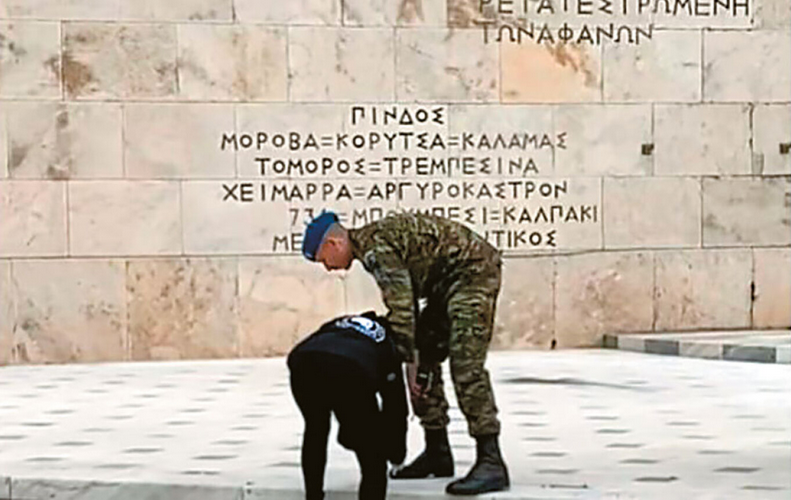
Who would have dared to throw a Molotov cocktail in front of the monument?
The National Monument in Ottawa, Ontario, Canada, the Portuguese Tomb of the Unknown Soldier in the Sala do Capitulo at the Batalha Monastery, near Leiria, the Eternal Flame Monument to the Unknown Soldiers of Israel in Jerusalem, the two monuments in both Cairo (with the tomb of Sadat) and Alexandria in Egypt, the Monument to the People’s Heroes in Beijing, the Tomb of the Unknown Soldier in Rome are just some of the points of honor and memory of every nation, which no one can approach with a threatening attitude. This is also an indication of elementary self-respect for every people, but also for every state…
Ask me anything
Explore related questions


